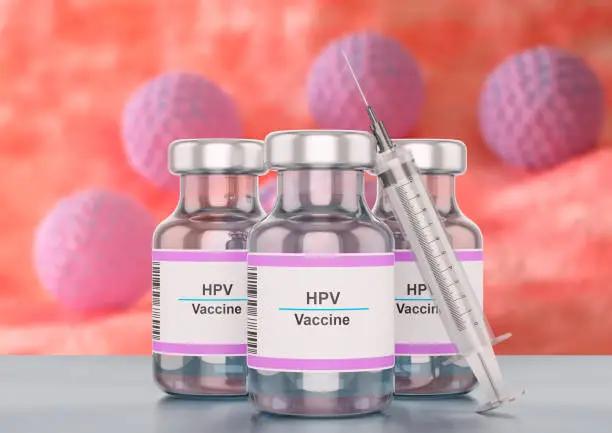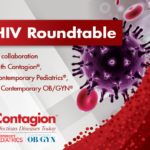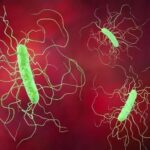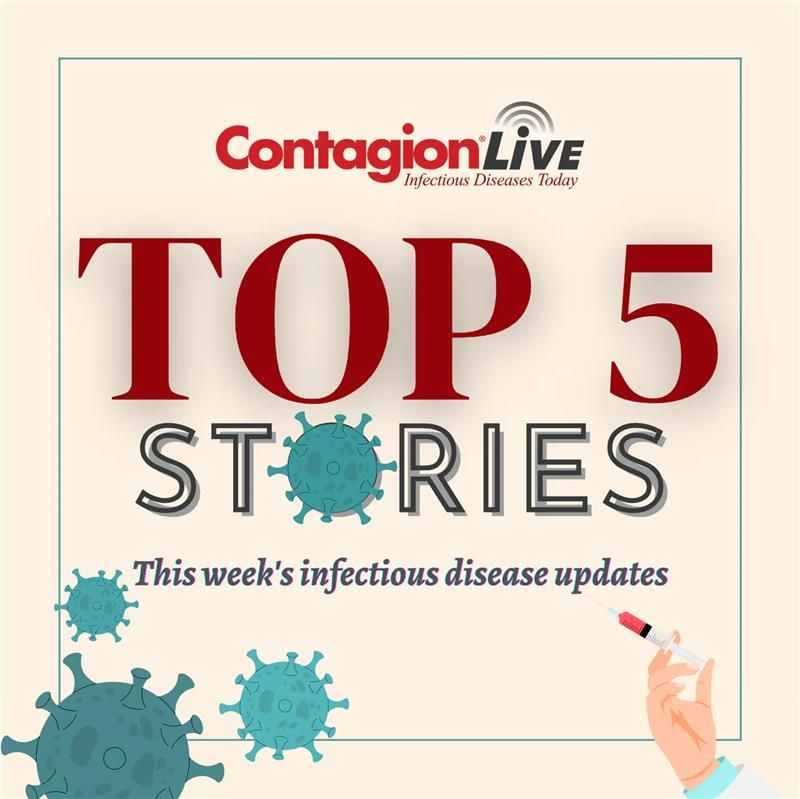HPV vaccine.
Image credit: Unsplash

The Advisory Committee on Immunization Practices (ACIP) recommends that adolescents aged 11–12 years receive three vaccines: tetanus, diphtheria, and acellular pertussis (Tdap); quadrivalent meningococcal conjugate (MenACWY); and human papillomavirus (HPV). Providers should continue to advocate for these routine vaccinations and regularly review adolescent vaccination records. Although overall vaccination rates have remained stable, targeted efforts are essential to address the decline in HPV vaccination coverage observed in certain birth cohorts.
In 2023, vaccination coverage for all routine vaccines recommended for adolescents was like that of 2022. Coverage among (Vaccines for Children) VFC-eligible adolescents remained steady during the COVID-19 pandemic, except for a decline in the percentage of those up to date with HPV vaccination by age 13 for individuals born in 2010 compared to those born in 2007. Before the pandemic, there were disparities in coverage between VFC-eligible and non-VFC-eligible adolescents, but these differences have lessened among the most recent birth cohorts surveyed.
“In 2021, approximately 25% of U.S. households reported that a child or adolescent had missed or delayed a health care visit because of the pandemic,” investigators state. “In addition, compared with coverage among adolescents born in 2007, HPV UTD coverage among those born in 2010 decreased 7.1 percentage points overall and 10.3 percentage points among VFC-eligible adolescents.
The CDC analyzed data from the 2023 National Immunization Survey-Teen, which covered 16,658 adolescents aged 13–17, born between January 2005 and December 2010. The analysis aimed to assess vaccination coverage for 2023, track recent trends by birth year, and examine coverage differences based on eligibility for the VFC program.
The report has three main limitations starting with a low household response rate may introduce selection bias. Second, coverage estimates by birth year rely on unequal sample sizes, especially smaller for younger adolescents, which affects precision. Third, coverage estimates for 2023 were notably lower than for 2022, potentially due to changes in survey procedures or reporting methods. Data may also underestimate actual coverage, particularly for HPV, by up to 5.2 percentage points
Importance of Both Studies
- Both studies highlight that HPV vaccines are crucial for preventing serious diseases, including cervical cancer, with the first study addressing the overall importance of vaccinations and the second focusing specifically on HPV’s effectiveness.
- Both studies analyze adolescent vaccination coverage, with the first examining routine vaccines and noting declines in HPV rates, while the second details HPV vaccination coverage across regions, including initiation and completion rates.
- Both studies track vaccination coverage trends over time, with the first documenting changes in HPV rates during and after the COVID-19 pandemic and the second assessing HPV coverage from 2013 to 2023 and noting regional variations.
The next study in MMWR focuses on HPV vaccines, which are also effective in preventing most cervical cancers. Introduced in US-Affiliated Pacific Islands (USAPI) between 2007 and 2016, these vaccines were mainly provided through school-based programs. Assessing adolescent vaccination coverage for tracking progress toward regional goals and identifying areas with low coverage is important. To enhance vaccine access and coverage evidence-based strategies are needed.
As of December 2023, HPV vaccination series initiation among girls aged 13–17 years ranged from 58% in Palau to 97.2% in the Northern Mariana Islands. Completion coverage ranged from 43.4% in Palau to 91.8% in the Northern Mariana Islands. Notably, completion coverage exceeds 90% in the Northern Mariana Islands, and American Samoa is on track to meet WHO goals by 2030.
The investigators note, “The school-located HPV vaccination program is an evidence-based intervention to increase HPV vaccination coverage, particularly in low- and middle-income settings. For example, secondary school enrollmentamong girls is approximately 66% in Federated States of Micronesia, 83% in Marshall Islands, and 80% in Palau, compared with approximately 97% in American Samoa and the Northern Mariana Islands.”
A retrospective analysis using data from jurisdictional immunization information systems estimated HPV vaccination coverage among adolescent girls from 2013 to 2023. The focus was on both initiation and completion of the HPV vaccination series, measuring progress toward the WHO 2030 goal of ≥90% series completion by age 15.
The report has three key limitations, first, the accuracy of coverage estimates relies on the completeness and accuracy of jurisdictional immunization information systems, (IIS) with evaluations showing high data quality since 2016, but earlier data remains unverified. Next, IIS data might overestimate the active patient population due to challenges in tracking migration and deaths, affecting coverage estimates. Lastly, vaccination coverage for Guam, assessed separately via the National Immunization Survey, is not comparable with IIS-based estimates for other USAPI jurisdictions.
In summary, both studies contribute to understanding and improving HPV vaccination coverage by highlighting trends, effectiveness, and regional differences, and they both emphasize the importance of continued monitoring and data collection for tracking progress and improving vaccination rates.
References
-
Pingali C, Yankey D, Chen M, et al. National Vaccination Coverage Among Adolescents Aged 13–17 Years — National Immunization Survey-Teen, United States, 2023. MMWR Morb Mortal Wkly Rep 2024;73:708–714. Accessed August 26, 2024. DOI: http://dx.doi.org/10.15585/mmwr.mm7333a1
-
Suggested citation for this article: Tippins A, Mutamba G, Boyd E, Coy KC, Kriss JL. Human Papillomavirus Vaccination Coverage Among Adolescent Girls Aged 13–17 Years — U.S.-Affiliated Pacific Islands, 2013–2023. MMWR Morb Mortal Wkly Rep 2024;73:715–721. Accessed August 26, 2024. DOI: http://dx.doi.org/10.15585/mmwr.mm7333a2








